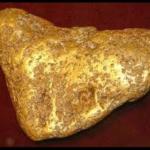Gold In 2019 And Beyond

In April 2020, GoldNews.com.au came under new management, articles published before this time, such as the below, may not reflect the views or opinions of the current GoldNews.com.au team.
Gold has come a long way in the investment world. It is loved by both ordinary people and global power brokers. It has been considered as a long term investment for those who want to build a strong financial future especially in these uncertain times. 2018 has been particularly eventful with gold showing growth when stocks and bonds faltered.
The yellow metal managed to reach $1,282 by the end of the year. In the last month alone, the price of gold rose by 5%. The demand for gold is growing with a number of countries increasing their gold reserves. However as demand increases, there have been questions about whether the world really had enough gold to meet the demand now and in the future, especially with gold being a finite natural resource.
In 2018, gold held firm, retaining its position as a reliable asset for the accumulation and preservation of wealth. It has certainly, shown itself to be more reliable than any other asset traded on the market and even more reliable than even the strongest currency.
Buying or investing in gold has never been more profitable now than it has in past years. It is definitely more profitable than it was a decade ago. In 2008,the price of gold dropped from $1,000 /oz. to $775/ oz. In the face of the global economic crisis, governments were busy panicking and trying hard to bail out the banks caught in the economic crisis. Ultimately, the price of gold closed at $870 an ounce at the end of the year.
Over the past six months in 2018, financial analysts noticed a decline in the price of gold. Market pundits expected gold to react by going up due to the negative dynamics in the market. The price of gold was expected to rise and it did. Some economists believe the rise was too little considering the negative geopolitical tensions and the global economic problems.
Gold started out weak in the beginning of 2018 and most analysts were sceptical about its return. Because of its low price, investors bought more which inadvertently ensured gold’s recovery and restoration in the long run. Things took a turn in November 2018 when the price began to rise and by the end of the year, gold was priced at $1,300.
What about 2019?
By the end of 2018, it became clear that gold was on a steady rise. Even though the year ahead promises to be turbulent politically and economically financial experts still recommend gold as a protective investment.
The increase in the price of gold also affects the demand for it especially from central banks that have been actively replenishing their gold reserved since 2017. When the world’s largest economic powers like Russia, Germany and India buy more gold to add to their reserves, it shows that countries have more confidence in gold.
Gold and crude oil?
Crude oil has always been a good indicator of how the economy is doing. These two assets are key to establishing the stability of a country. They are often pitted against each other and crude oil fell significantly low in the last ten years which means gold has been winning that competition.
There is a paradox between crude oil prices and gold. Although they may be interrelated they have different effects. For instance, a rise in the price of crude oil causes a decline in the economy however an increase in the gold price overcomes this.
The price of gold has been boosted by a number of things including the volatility of the market, unemployment, the decline in the purchasing power of major currencies like the dollar, the trade war between the U.S and China, the inflammatory rhetoric that has been coming out of the U.S with regards to other countries and Brexit amongst other things. To sum it up: the crazier the world seems the higher the price of gold rises.
The demand for gold according to the World Gold Council (WGC) has been growing especially in countries like India and China where gold has a cultural as well as a financial significance. These developing economies account for nearly half of the world’s total demand for gold.
Is there enough gold to meet the growing demand?
Gold is a finite and scarce commodity which is why it is so valuable. However. Gold mining has been declining. South Africa which was the world’s biggest gold producer some decades ago has seen a decline in gold mine production. Experts believe that there is just six thousands tons of gold still left to mine in South Africa.
The second biggest historical producer of gold, Australia is facing the same problems. There has been a steady decline of mined gold in Australia which has resulted in the closure of a lot of mining operations. Experts predict that the gold in Australia will be completely mined out by 2057.
Other countries have seen a decline in production mainly because, they have to dig deeper and equipment that allows them to do so is too expensive. Others like Russia can attribute the decline to production to aging mining equipment and old ineffective mining method.
As gold reserves get scarcer every year, experts are reporting that the global rate of gold mining will decrease by one-third every year until 2025. By all indications, gold is in a good space right now and will continue to rise in 2019 and beyond.
Sources:
https://www.providentmetals.com/knowledge-center/precious-metals-resources/global-gold-supply-predictions.html
https://www.schroders.com/en/insights/economics/financial-markets-2018-the-year-in-review/

















Leave a Reply